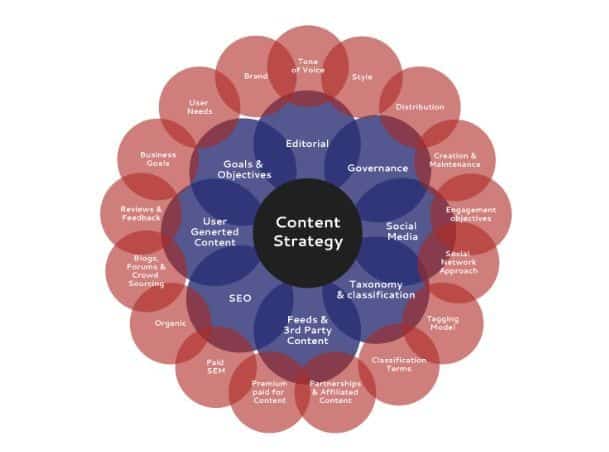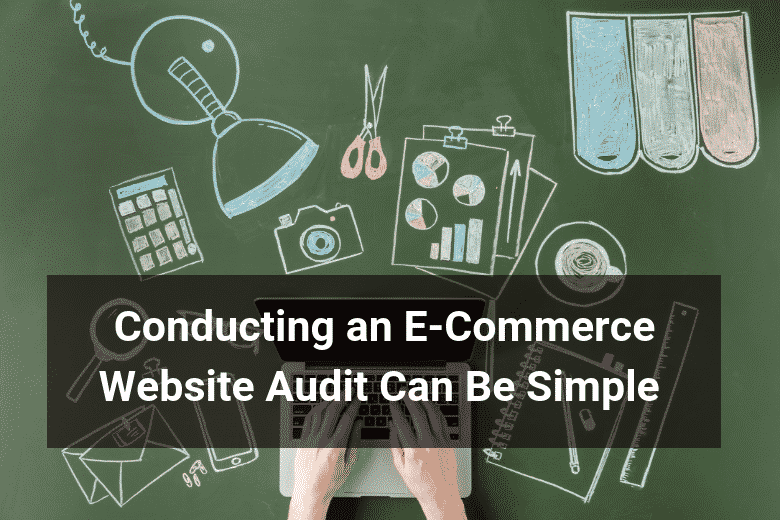In the world of e-commerce, auditing is an important business. Like it or not, auditing helps give an insight into how the business is performing, give an idea of what changes need to be made, and show you if your website is performing how you expected. To keep ahead of the game, you need to conduct regular audits so you aren’t unknowingly undercut by your competitors, and give you a good grasp of how to optimize business when going forward! We’ve put together some top tips on how to conduct an e-commerce website audit like a professional!
Content strategy
What is a website without content? Good content is the foundation upon which your website is built, so getting it right is paramount, especially as it is this that encourages potential buyers to part with their money. Here is a handy diagram to make the information easier to digest:

Are you offering enough variety in your content? You need to make it as interesting as possible; if it is too repetitive, you will very quickly lose buyers’ interest and see them flock to your competitors. Take stock of what content you have used in the last year or so, and make sure you mix it up. However, seasonal selling is always a great way to up sales, especially if your customers are expecting it from a build -up beforehand. Finally, are your company’s values clearly visible from your website? Check whether the message you want to be conveyed is clearly displayed around your website, from headlines to content.
Product organisation
If your website is clunky to use and products are organised badly, your custom will be significantly lower than it could be. Some of the most important things to consider surround search engine optimization. “Delve into how you manage expired items, seasonal items, and new products, as they all have an impact upon SEO,” says George Gilchrist, an ecommerce marketer at 1Day2Write and Brit Student. “You need to make sure your internal linking is strong, products are organised properly and clearly, and make sure the product pages are well padded with plenty of SEO content!” Some easy areas of improvement are the removal of duplicate pages, 404 error pages, and links to dead, defunct pages. Additionally, using high quality, original images can say a thousand words, so make sure you use them as frequently as possible.
Use the right platform
Are you using the right platform for your products? For businesses that have acquired an existing e-commerce store, and therefore the website, it is tempting to leave it as it is and not make any changes for a while. This is a fatal mistake! As part of conducting an audit, you must look into whether the existing platform is still suitable for your business’ needs, as a professional, easy-to-navigate platform can give a huge boost in sales. “The most common reasons for making a change to the platform you use include cost, platform speed, the fact that your company has outgrown the platform, and market conditions, amongst others,” says Barbara Clark, web developer at WriteMyX and Australia2Write. “If you find your current platform that you have inherited is no longer working for your business for even one of these reasons, then it is probably time for a change!”
Speed and ease of use
When confronted with a website that takes a long time to load, your customers will likely give up and go elsewhere – which, obviously, is something we all want to avoid. Make sure to keep testing your website’s speed at regular intervals, keep images compressed, and CSS minified. Additionally, make sure you plan for unexpectedly high traffic (such as during seasonal sales), as you don’t want customers to be left on a broken webpage, unable to spend any money!
Consistent content
As a business, you want to build customer confidence in your reputation, and trust your brand. To ensure this, make sure your website is consistent in both content and design: employ great content writers to create fresh, unique copy for your web pages, with content feeling both personal and informative, steering clear of boring, repetitive copy. That said, it is still crucial to include the ‘boring’ pages that you think no one reads, to keep yourself covered – having a ‘Terms and Conditions’ page, and an FAQs page, will ensure you have covered all bases.
Original images
There are few things more off-putting than stock images that have clearly been lifted from some corner of the internet. They say nothing about your business, what you do, or what you are about – conversely, it can show that you pay little attention to the details and care very little what your customers think of you. Investment in good quality, original images will pay off tenfold. Show your products at different angles so that your customers have a good idea of what they are buying, but don’t alienate customers with fantastical images. You want them to be able to visualize themselves using your goods, not see them as elusive and removed from themselves.
Follow customers’ journeys
Website analytics are a wonderful tool of modern technology. They give you an insight into all kinds of things, including how easy your website is for customers to navigate. You can look the conversion rate – where about in the journey through your website do customers decide to buy? Alternatively, where do they drop off? It is interesting to see how many customers abandon the website at the shopping cart, which means you should take a good look at how your check out process needs to change. Which products are selling the best and the worst? What alterations can you make to increase sales? Website analytics are invaluable in helping you make these changes, so use them to your advantage!
To be vigilant with your e-commerce store auditing is to set the bar high, and help your business in the future. If you set the goals and strategies out at the beginning, and stick to them, you will be amazed to see how much this can help conversion rates and sales in the future.
Author
Martha Jameson is a content editor and proof reader at AcademicBrits.com and OriginWritings.com. Prior to this, she was a manager, and a web designer. Her main passions and desires in life are to help her readers, by sharing her knowledge and experiences with them.

Ready To Upgrade Your Logistic Solution?
Speak to Floship ecommerce logistic consultant about improving your global support chain today




